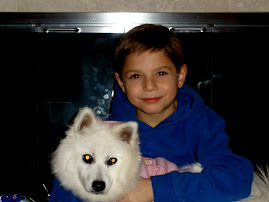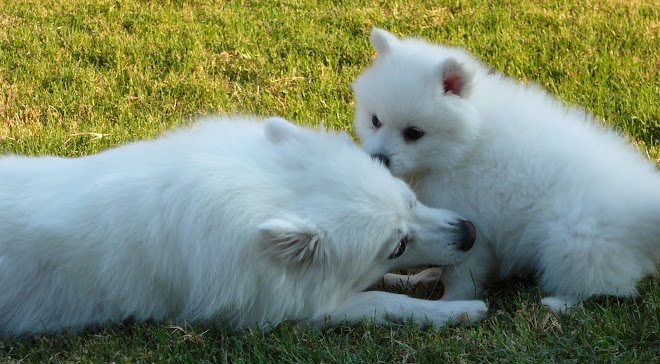August 13, 2011
In extreme temperatures, all dogs are at risk - even dogs who you feel may be acclimated to hot weather. However, air temperature is only one consideration. Humidity, sun exposure (or lack of shade), amount of time in the heat, the level of exertion, and availability of water can all affect how well a dog tolerates heat. Be aware of signs of heat distress, such as excessive panting or drooling, reddened gums, listlessness, or rapid heartbeat. Fortunately, there are plenty of ways to help prevent your dog from getting so overheated that he suffers heat stress or heatstroke.
1) AVOID EXPOSING YOUR DOG UNDULY TO EXTRAORDINARY HEATH. If you must leave your dog outside, ensure he has ample methods for staying cool - plenty of shade, lots of fresh, cool water to drink, and perhaps the cooling breeze of a fan.
2) MODIFY YOUR DOG'S EXERCISE ROUTINE IN HOT WEATHER. Walk him after dark or before dawn. Incorporate swimming or water play into your dog's usual game of fetch. During severe heat, forego any sort of rigorous exercise for a few days.
3) GET HIM WET. Hose your dog down, put him in the tub, mist him with a spray bottle, or wipe his coat with a sopping wet towel. In a dry climate, the evaporation will help lower his body temperature. In a humid environment, you'll need to get some extra air flowing over him for a wet coat to help him cool down.
4) PROVIDE AMPLE WATER. Make sure your dog has lots of fresh, cool water - preferably from more than one source, as dogs always seem to drink more when they have more options.
5) USE AN EVAPORATIVE COOLING VEST, COAT, BANDANNA, OR MAT. There are plenty of these products on the market. Look for garments that are wetted and gradually release water through evaporation (example: HyperKewl Evaporative Cooling Dog Coat by TechNiche International). But in a pinch, even a plain cotton T-shirt or bandanna, wetted and worn by the dog, can help provide some evaporative cooling.
* Summary of article written by Nancy Kerns, for Whole Dog Journal Vol. 14 #8, August, 2011
(www.whole-dog-journal.com)
In extreme temperatures, all dogs are at risk - even dogs who you feel may be acclimated to hot weather. However, air temperature is only one consideration. Humidity, sun exposure (or lack of shade), amount of time in the heat, the level of exertion, and availability of water can all affect how well a dog tolerates heat. Be aware of signs of heat distress, such as excessive panting or drooling, reddened gums, listlessness, or rapid heartbeat. Fortunately, there are plenty of ways to help prevent your dog from getting so overheated that he suffers heat stress or heatstroke.
1) AVOID EXPOSING YOUR DOG UNDULY TO EXTRAORDINARY HEATH. If you must leave your dog outside, ensure he has ample methods for staying cool - plenty of shade, lots of fresh, cool water to drink, and perhaps the cooling breeze of a fan.
2) MODIFY YOUR DOG'S EXERCISE ROUTINE IN HOT WEATHER. Walk him after dark or before dawn. Incorporate swimming or water play into your dog's usual game of fetch. During severe heat, forego any sort of rigorous exercise for a few days.
3) GET HIM WET. Hose your dog down, put him in the tub, mist him with a spray bottle, or wipe his coat with a sopping wet towel. In a dry climate, the evaporation will help lower his body temperature. In a humid environment, you'll need to get some extra air flowing over him for a wet coat to help him cool down.
4) PROVIDE AMPLE WATER. Make sure your dog has lots of fresh, cool water - preferably from more than one source, as dogs always seem to drink more when they have more options.
5) USE AN EVAPORATIVE COOLING VEST, COAT, BANDANNA, OR MAT. There are plenty of these products on the market. Look for garments that are wetted and gradually release water through evaporation (example: HyperKewl Evaporative Cooling Dog Coat by TechNiche International). But in a pinch, even a plain cotton T-shirt or bandanna, wetted and worn by the dog, can help provide some evaporative cooling.
* Summary of article written by Nancy Kerns, for Whole Dog Journal Vol. 14 #8, August, 2011
(www.whole-dog-journal.com)





















